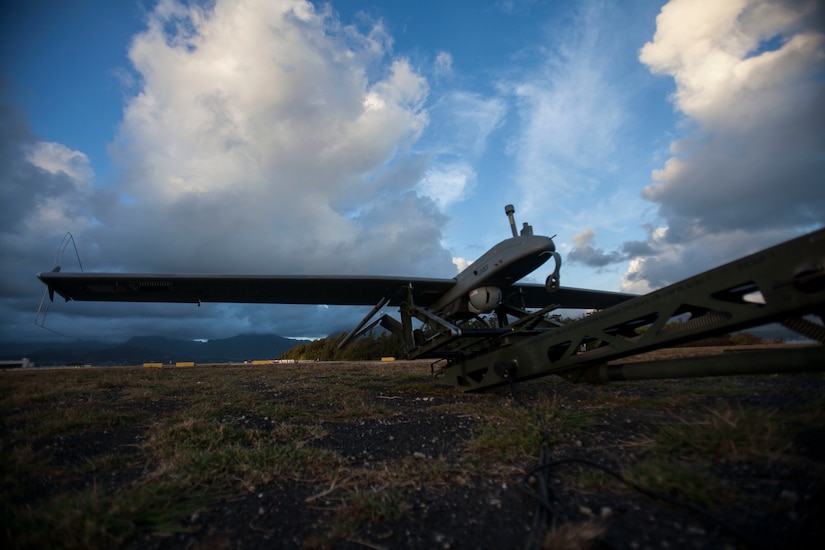By Marine Corps Sgt. Jesus Sepulveda Torres, Marine Corps
Base Hawaii
MARINE CORPS BASE HAWAII, Hawaii -- After years of service
to the armed services, the RQ-7B Shadow unmanned aerial system was retired
after its final flight during the culmination event for the Rim of the Pacific
exercise at Pyramid Rock Beach here July 29.
Marine Unmanned Aerial Vehicle 3 was the last squadron to
use the Shadow. The other Marine Corps unmanned aerial vehicle squadrons
already transitioned to the RQ-21 Blackjack.
Marine Corps Master Sgt. Madhur Sawhney, an air crew chief
with operations and training for Marine Aircraft Group 24, said the Shadow’s
support for Rimpac operations was vital.
“The Shadow provided real-time footage of the objective area
for the Marine Air-Ground Task Force commander to guide his decisions,” Sawhney
said. “Prior to any forces landing on the beach, we were up in the air
gathering intelligence alongside our other air combat element aircraft.”
He added that while the Shadow has been a versatile system
that makes a difference during missions, the transition to the new Blackjack
makes the Marine Corps mission to be expeditionary even sharper.
Marine Corps Capt. Mathew Kramer, an unmanned aerial vehicle
commander with VMU-3, said the last flight was the end of an era. “Variances of
the RQ-7 have been flying since Operation Desert Storm, throughout the wars in
Iraq and Afghanistan, right up until operations ceased,” he said. “It’s
exciting to see how the Blackjack will perform.”
Return to Expeditionary Roots
Sawhney said the transition continues a long line of progress.
“Serving for as long as I have, we have retired multiple platforms over the
years to continuously be a more effective force to assist in operations,” he
said. “The last flight of the Shadow is a positive direction towards returning
to our expeditionary roots.”
The San Antonio-class amphibious transport dock ships that
are part of amphibious ready groups and Marine expeditionary units will be able
to launch the Blackjacks, Sawhney said. He noted that the new platform is
lighter and smaller than its predecessor.
“The Blackjack has a smaller footprint with a 16-foot wing
span and a lighter weight distribution at 135 pounds when wet, with an average
flight time of 10 hours,” he added. “Before the Blackjack, a detachment to
support the Shadow mission included around 70 Marines, but now it’s decreased
to 21 personnel.”
Sawhney said as the mission continues, technology will also
continue to advance and lead unmanned aircraft systems to return to their
expeditionary roots.

No comments:
Post a Comment